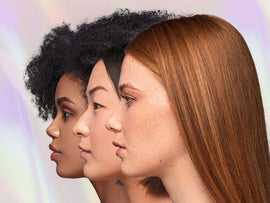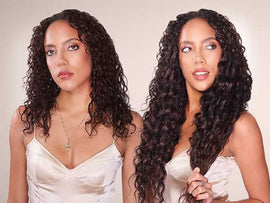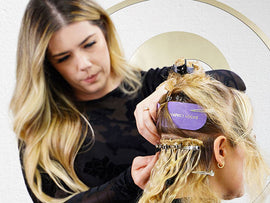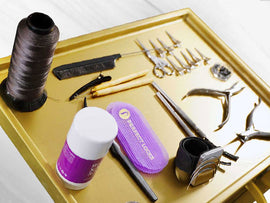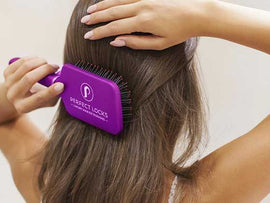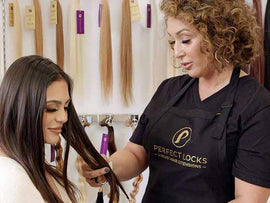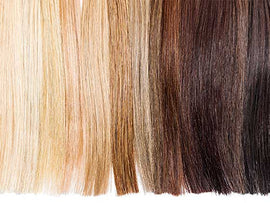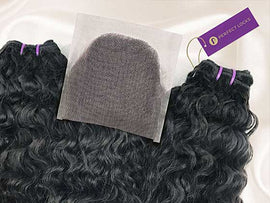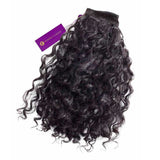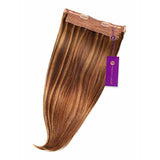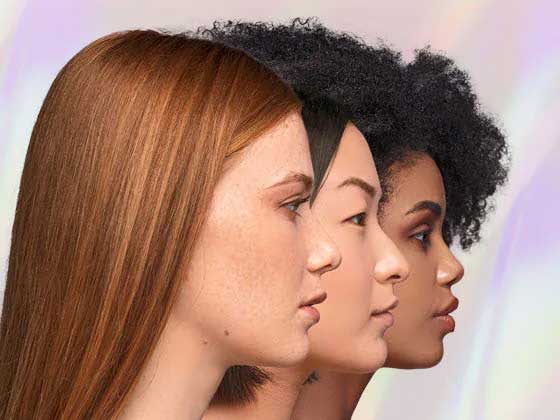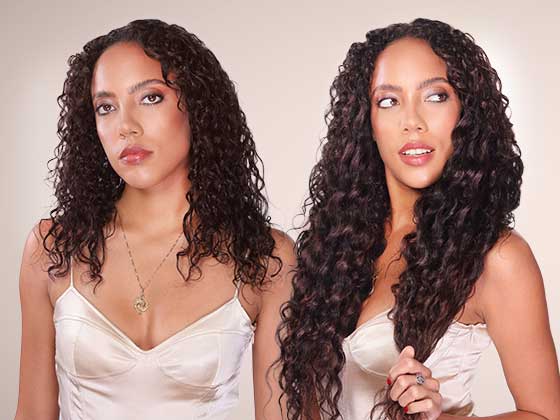Why Braiding Hair Remains a Timeless Beauty Essential
Braiding hair has been a cornerstone of protective styling for over 30,000 years, offering women a versatile way to achieve stunning looks while maintaining hair health. Whether you're seeking synthetic extensions for budget-friendly styling or premium human hair for natural movement, understanding your options is key to achieving salon-quality results.
Quick Guide to Braiding Hair Types:
- Synthetic Hair - Cost-effective ($5-20 per pack), holds shape well, may cause scalp irritation
- Human Hair - Natural look and feel ($149-209), can be colored and styled, lasts over a year
- Plant-Based Hair - Eco-friendly ($45-70 per pack), reduces itching, biodegradable option
Popular Braiding Styles:
- Three-strand braids (classic foundation technique)
- Cornrows (flat against scalp, protective)
- Box braids (sectioned squares, versatile)
- Knotless braids (gentler on hairline)
- Twist styles (two-strand alternative)
Braiding serves multiple purposes beyond aesthetics. As protective styling, it reduces daily hair manipulation and can promote healthy growth by minimizing breakage. The cultural significance runs deep - historically, braided patterns communicated identity, social status, and even escape routes during slavery.
Key Benefits of Quality Braiding Hair:
- Protective styling reduces heat damage
- Low maintenance saves daily styling time
- Versatile lengths from 18" to 30" available
- Long-lasting results with proper care (4-8 weeks typical)
I'm Priyanka Swamy, founder and CEO of Perfect Locks, with over 15 years of experience helping women achieve their hair goals through ethically sourced extensions and professional education. Having worked extensively with braiding hair solutions for both individual clients and salon professionals, I understand the importance of quality materials and proper technique for lasting, beautiful results.
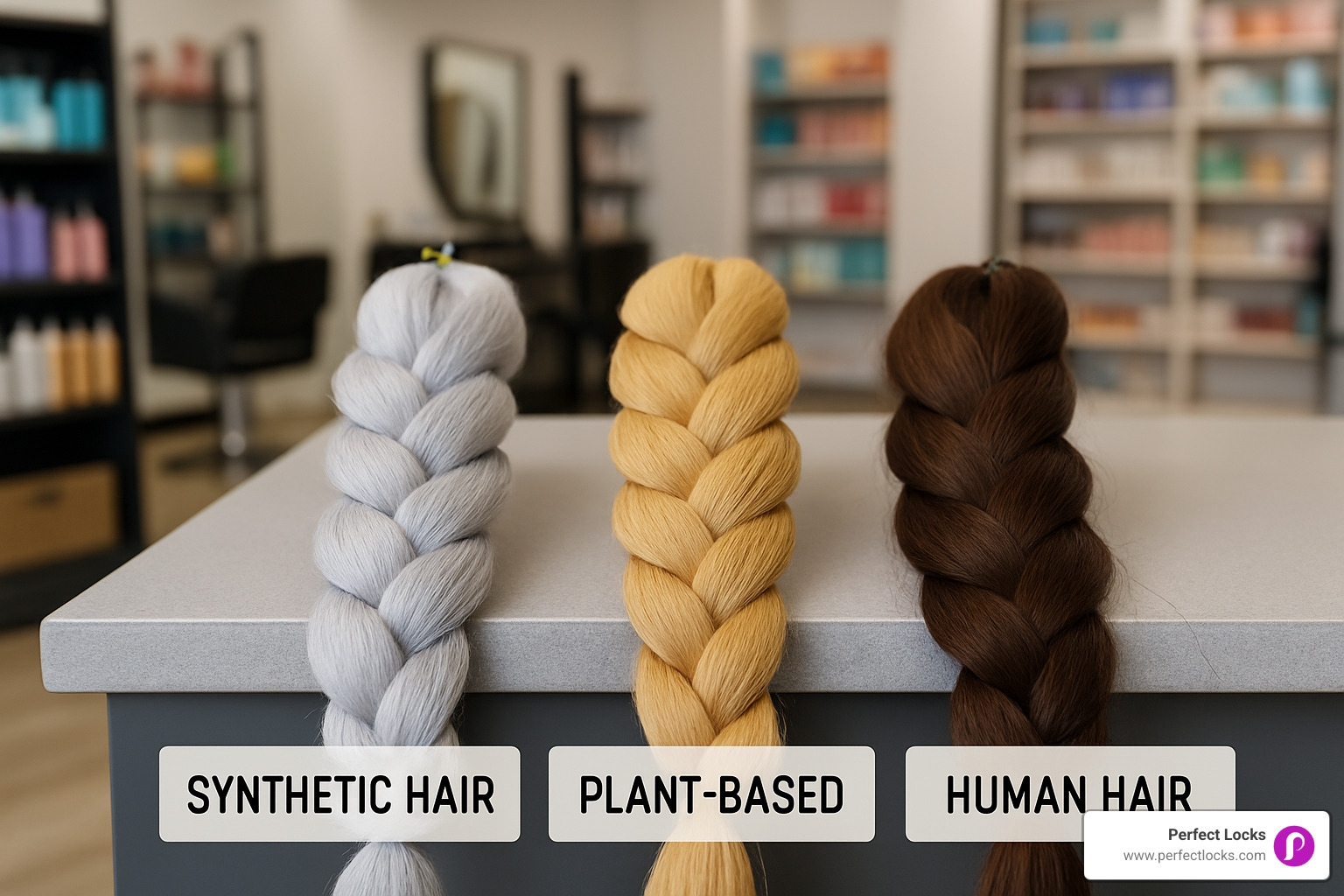
What Is Braiding Hair & Its Cultural Roots
Braiding hair is specially designed hair extensions that come without wefts, giving you complete freedom to create stunning braided styles. Unlike regular extensions that are sewn onto tracks, braiding hair is loose and ready to blend seamlessly with your natural hair for cornrows, box braids, twists, and countless other protective styles.
The beauty of braiding lies in its fundamental techniques. The classic three-strand braid forms the foundation - simply divide hair into three sections and cross them alternately over each other. Cornrows take this further by creating flat braids that hug your scalp, braided underhand along carefully parted sections. Box braids offer incredible versatility through individual braids created from square-sectioned hair, while twists provide a gorgeous rope-like alternative using just two strands.
But here's where the story gets truly fascinating - braiding isn't just about looking beautiful. This art form carries profound cultural significance that spans thousands of years.
Ancient Saharan cave paintings from 3500 BC show women wearing intricate cornrows, proving that braiding has been a cherished tradition since the dawn of civilization. In African cultures, elaborate braided patterns weren't just hairstyles - they were identity symbols that communicated family lineage, social status, and tribal affiliation at a glance.
During one of history's darkest chapters, braids became literal lifelines. Enslaved people used intricate braiding patterns as communication codes, encoding secret maps to freedom routes directly into their hairstyles. These weren't just beautiful styles - they were acts of resistance and hope that helped save lives.
Today's braiding renaissance beautifully honors this rich heritage while embracing the practical protective benefits that science supports. When you braid your hair, you're reducing daily manipulation that can cause breakage. You're minimizing heat damage and giving your natural hair a chance to thrive with less friction and stress.
As one researcher beautifully put it, "Braiding is a beauty rite of passage for many people of color." It represents both cultural pride and smart hair care rolled into one gorgeous package.
Modern braiding continues to evolve, with celebrities and everyday women alike celebrating styles that connect us to ancestral wisdom while protecting our hair's health. Whether you're choosing braiding hair for its cultural significance or protective qualities, you're participating in a tradition that spans millennia.
More info about deep-rooted history
Choosing the Best Braiding Hair Options
When you're standing in the beauty supply store staring at walls of braiding hair options, it can feel overwhelming. Trust me, I've been there! The good news is that choosing the right hair for your braids doesn't have to be complicated once you understand what each type offers.
| Hair Type | Cost Range | Longevity | Pros | Cons |
|---|---|---|---|---|
| Synthetic | $5-20/pack | 4-6 weeks | Affordable, holds shape, pre-stretched options | May cause itching, VOC concerns, less natural look |
| Human Hair | $149-209/pack | 1+ years | Natural movement, can be colored/styled, comfortable | Higher upfront cost, requires more maintenance |
| Plant-Based | $45-70/pack | 4-8 weeks | Eco-friendly, reduces scalp irritation, biodegradable | Limited color options, higher cost than synthetic |
The three main categories each serve different needs and budgets. Your choice depends on factors like how long you want to keep your braids, whether you have a sensitive scalp, and what your styling goals are.
Synthetic Braiding Hair
Let's start with the most popular option - synthetic braiding hair. Synthetic fiber dominates this category, and there's a reason it's everywhere. It's budget-friendly, lightweight, and holds its shape beautifully. Pre-stretched synthetic hair is a game-changer because it saves you hours during installation and creates that professional look we all want.
But here's something important to know: recent scientific research on synthetic hair VOCs has found concerning levels of volatile organic compounds in some brands. We're talking about chemicals like lead and acetone that you probably don't want near your scalp for weeks at a time.
The benefits of quality synthetic hair are real though. It's antimicrobial in premium versions, stays tangle-free, and gives you consistent color matching every time. For temporary styling or if you're just starting your braiding journey, synthetic can be perfect.
Human Hair Extensions
Now, if you want the ultimate in braiding hair luxury, human hair is where it's at. Yes, the upfront cost makes your wallet cry a little, but here's the thing - virgin human hair can last over a year with proper care. That actually makes it more cost-effective in the long run than constantly replacing synthetic hair.
The real magic happens in how it moves and feels. Human hair behaves exactly like your natural hair because, well, it is natural hair. You can wash it, color it, style it with heat, and it just keeps looking gorgeous. For those with sensitive scalps, human hair is often the most comfortable option since there are no synthetic chemicals involved.
The versatility is best. Want to switch up your color mid-way through wearing your braids? Go for it. Feel like adding some curls to the ends? Your human hair braiding extensions can handle it.
Plant-Based Innovations
The newest player in the braiding hair game addresses something we're all thinking about more - environmental impact and scalp health. Plant-based options using banana fibers and other natural materials offer a biodegradable alternative that significantly reduces plastic waste.
These innovative fibers often come embedded with nourishing ingredients like jojoba and ginseng, which can actually benefit your scalp while you wear them. If you've struggled with itching from synthetic hair, plant-based options might be your solution.
The trade-offs? They can be trickier to install and may frizz faster than synthetic alternatives. Color options are also more limited since natural plant fibers don't take dye the same way synthetic materials do.
Understanding how your braiding hair is made can help you make better choices. How Bulk Hair Becomes Braiding Extensions walks you through the fascinating process of changing raw hair into the specialized extensions perfect for braiding techniques.
The bottom line? There's no single "best" braiding hair - only what's best for your specific needs, lifestyle, and budget. Whether you choose synthetic for its convenience, human hair for its versatility, or plant-based for its eco-friendliness, the key is selecting quality materials that will keep your scalp happy and your braids looking fresh.
Mastering Braiding Hair Techniques
Success with braiding hair starts with having the right tools in your arsenal. Your sectioning game needs to be on point - a sharp rat-tail comb becomes your best friend for creating those perfectly straight parts that make all the difference. Don't forget a wide-tooth comb for gentle detangling, hair clips to keep sections organized, edge control gel for those crisp finishing touches, and small elastics to lock everything in place.
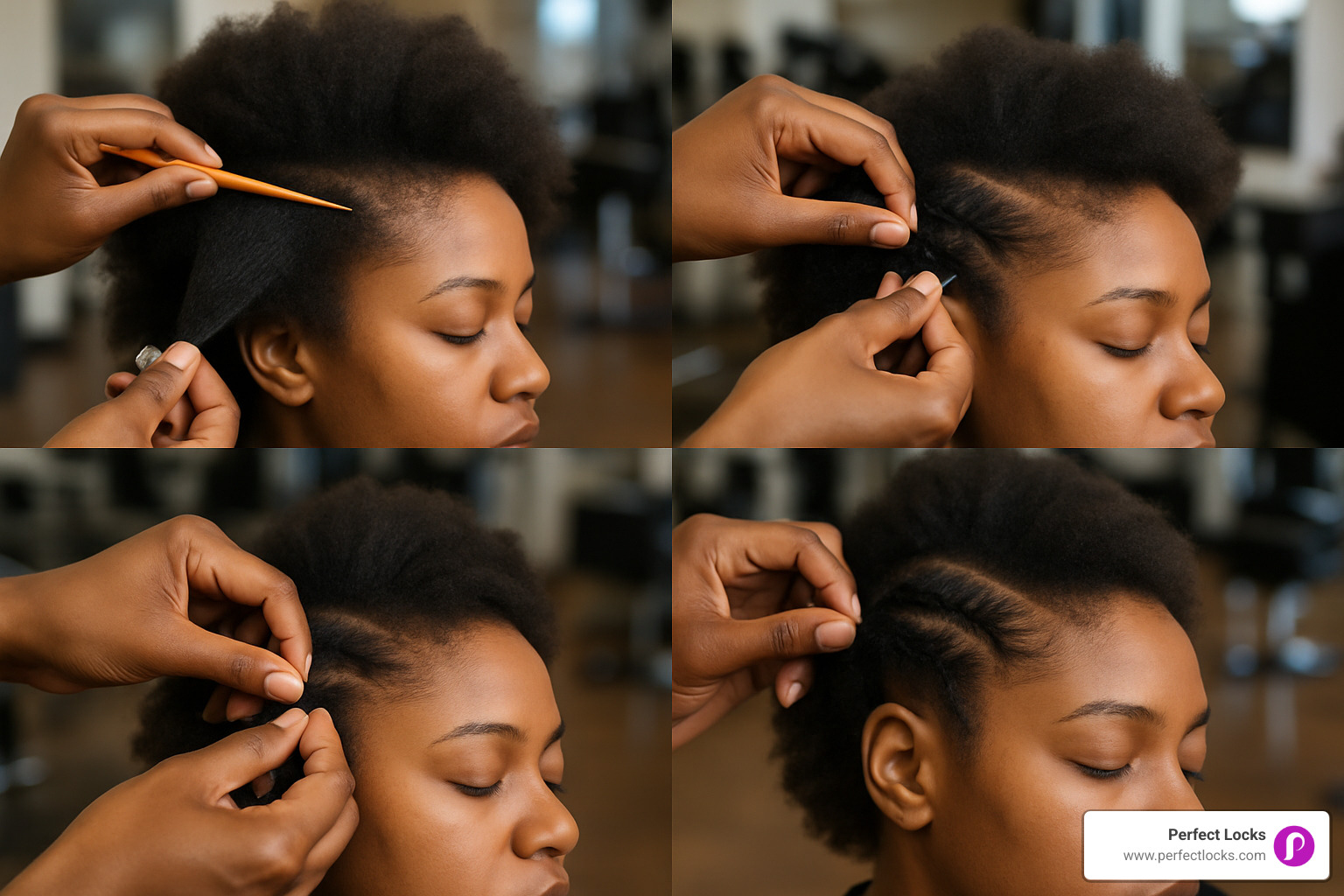
Here's where many people go wrong - tension control is absolutely everything. Think of it like Goldilocks and the three bears: too tight and you'll have a sore scalp (plus potential hair loss), too loose and your beautiful braids will look messy and fall apart quickly. You want that "just right" tension that feels secure but comfortable.
The magic happens when you start each braid with just a small amount of hair. This creates those clean, professional lines while being gentle on your scalp. Trust me, your head will thank you later.
Different styles call for different approaches. Box braids need those perfectly uniform square sections - no shortcuts here. Cornrows require that underhand braiding technique along narrow tracks, creating those gorgeous flat-to-scalp patterns. Knotless styles are the gentler cousin, where you gradually add extension hair for a more comfortable experience.
Here's a pro tip that saves tons of time: pre-stretching your synthetic braiding hair eliminates this step during installation. Your arms will appreciate not having to stretch hair while trying to braid! When working with human hair extensions, the goal is seamless blending - match that texture and make sure you're distributing the hair evenly throughout each braid.
Want to see these techniques in action? Check out How to Braid Hair Using Human Hair Extensions for detailed visual guidance that makes everything crystal clear.
Preparing Your Hair for Braiding Hair Installation
Think of prep work as laying the foundation for a house - skip it, and everything else might crumble. Start with a clarifying wash using sulfate-free shampoo to remove every trace of product buildup. Your hair needs to be squeaky clean for the best results.
Next comes deep conditioning - this is where you strengthen your hair with protein treatments if it's feeling fragile. Follow up with thorough detangling, working patiently from ends to roots with your wide-tooth comb. Rushing this step is a recipe for breakage.
Moisturizing comes next, but here's the catch - use leave-in conditioner and avoid heavy oils that can make your braids slip. Some people swear by an optional blow-dry step because it creates smoother parts and helps styles last longer. If you choose to blow-dry, always use heat protectant and keep temperatures moderate.
One golden rule: never, ever braid wet hair. This can lead to mildew (gross!) and actually weakens your hair structure. Your patience here pays off in spades.
Safely Removing Braiding Hair Extensions
Removal is where good intentions often go wrong. The temptation to rush is real, but your hair deserves better. Start by carefully cutting extension ends - and I mean carefully. You want to avoid your natural hair at all costs.
Detangling spray becomes your lifeline here. Apply it liberally to soften those braids before you start the solveing process. Work gently from tip to root using just your fingers initially, then graduate to a wide-tooth comb for stubborn tangles.
The moment you're free of all extensions, jump straight into a clarifying wash and deep conditioning session. Your hair has been through a lot and needs some TLC.
Here's the reality check: plan for 2-3 hours for safe takedown of full-head braids. Yes, it's time-consuming, but it's so much better than dealing with breakage later. Never use excessive force or try to rush the process.
For comprehensive removal guidance that covers every scenario, Tips for Removing Braided Hair Extensions has you completely covered.
Maintenance, Scalp Care & FAQs
Taking care of your braiding hair extensions doesn't have to be complicated, but it does require consistency. Think of it like tending a garden - a little regular attention goes a long way toward keeping everything healthy and beautiful.
Your scalp is the foundation of healthy braids, so keeping it moisturized should be your top priority. Hydration mists made with water, leave-in conditioner, and a few drops of light oil work wonders when applied 2-3 times weekly. Just don't go overboard with heavy products that can cause buildup.
Washing braids might seem tricky, but it's actually quite simple once you get the hang of it. Every 2-3 weeks, use a diluted shampoo solution and focus on massaging your scalp gently with your fingertips. Your braids will thank you for the cleanliness, and your scalp will feel refreshed.
Nighttime protection is where many people miss the mark. A silk bonnet or satin pillowcase isn't just a luxury - it's essential for preventing frizz and maintaining your style's longevity. Your hair will glide smoothly instead of catching on cotton fibers all night long.
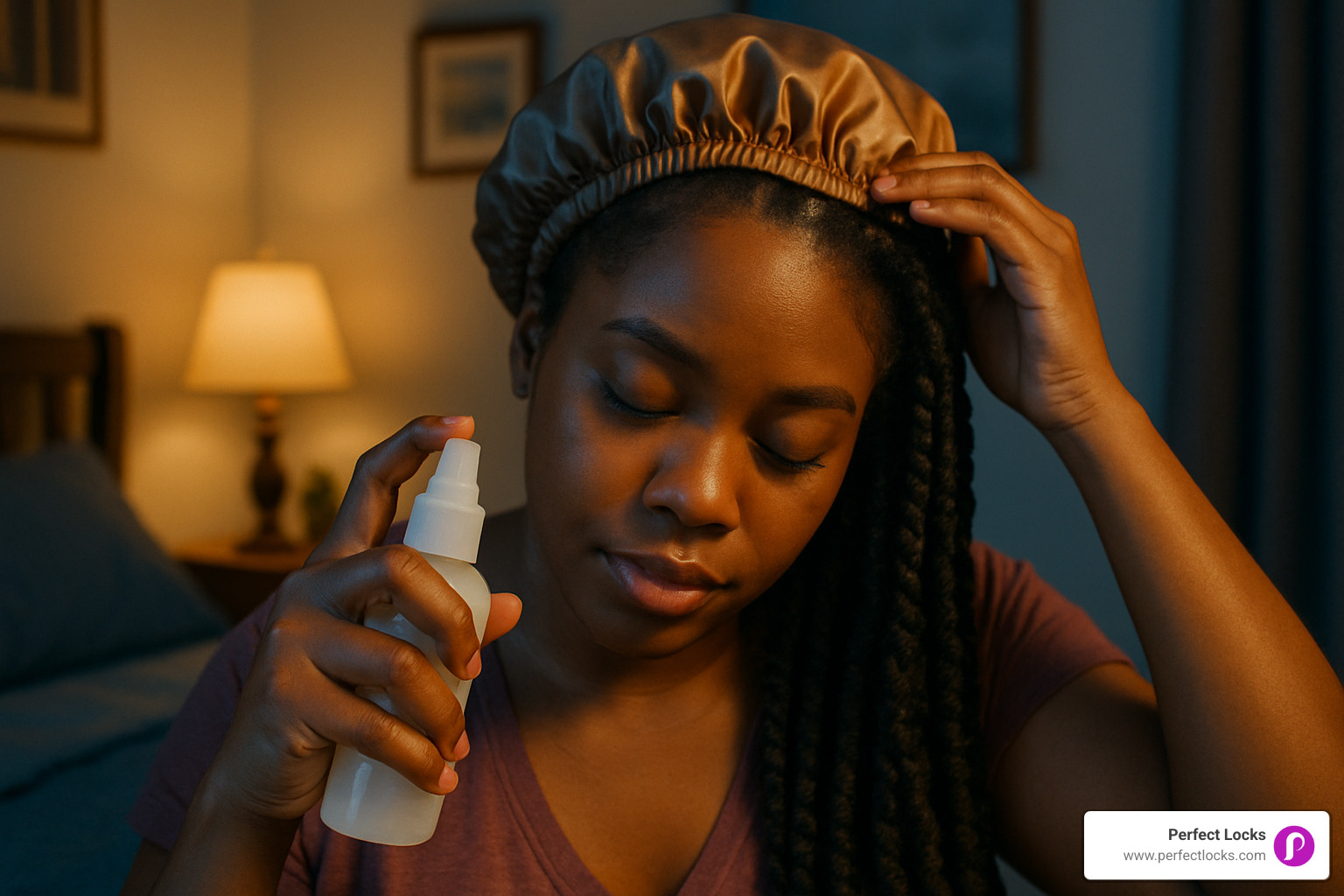
Keep an eye out for warning signs that your braids might be causing problems. Persistent scalp soreness or headaches shouldn't be ignored - they're your body's way of saying something isn't right. Red, shiny skin along your part lines indicates excessive tension, while bumps or irritation could signal folliculitis, an infection of hair follicles that requires prompt attention according to scientific research on folliculitis.
Frizz control mousse or edge control products can help smooth flyaways between washes, but use them sparingly. The goal is improvement, not suffocation of your braids.
FAQ 1: How long should braids last?
The sweet spot for braiding hair extensions is typically 4-6 weeks, though they can safely stay in up to 8 weeks maximum. Your natural hair grows about half an inch each month, which means longer wear times can lead to tangling and matting at the roots.
Several factors affect how long your braids will look fresh. Hair growth rate varies from person to person, while braid size and tension play crucial roles in longevity. Smaller, tighter braids often last longer but require more careful monitoring for scalp health.
Natural hair braids without extensions should come out within 3 weeks to prevent serious tangling. Trust me - removing them sooner is much easier than dealing with matted hair later.
FAQ 2: How do I wash braids without frizz?
The secret to washing braids without creating a frizzy mess lies in your technique and dilution ratios. Mix your shampoo with water in a 1:2 ratio using a spray bottle - this gives you control and prevents harsh scrubbing.
Focus the diluted shampoo on your scalp rather than the braids themselves. Massage gently with your fingertips, working in small sections. When rinsing, let the water flow down the length of your braids rather than manipulating them directly.
After washing, squeeze your braids gently with a microfiber towel - never rub or twist them. Apply a light leave-in conditioner mist and allow everything to air dry completely. This method cleanses effectively while preserving your braid structure.
FAQ 3: What are signs my braids are too tight?
Your body will tell you pretty quickly if your braids are too tight, and it's important to listen to these signals. Scalp tenderness or a throbbing sensation are immediate red flags that shouldn't be dismissed as "normal."
Headaches, especially ones that worsen at night when you're lying down, often indicate excessive tension from tight braids. If you can't move your scalp normally or notice white or shiny appearance along your part lines, the braids are pulling too hard on your hair follicles.
Bumps or irritation at the hairline deserve immediate attention. These can develop into more serious conditions if ignored. Chronic tension from overly tight braids can cause permanent hair loss and scarring - something no hairstyle is worth risking.
If you're experiencing any of these symptoms, don't try to tough it out. Loosen or remove the problematic braids right away. Your hair's long-term health is far more important than maintaining a style that's causing damage.
Trends & Perfect Locks Pro Advantage – Conclusion
The world of braiding hair is experiencing an exciting evolution, blending traditional techniques with modern innovations. Knotless braids have become the gold standard for protective styling, offering a gentler approach that reduces tension on the hairline while maintaining that coveted sleek look. Meanwhile, goddess braids are making waves with their romantic, textured appeal that works beautifully for both casual and formal occasions.
Color experimentation has reached new heights in braiding. From soft pastels that whisper elegance to bold, vibrant hues that make a statement, today's braiding enthusiasts aren't afraid to express their personality through color. The beauty of quality braiding hair is that it allows for this creative freedom while still protecting your natural hair underneath.

The sustainability wave is reshaping how we think about beauty choices. More clients are asking about eco-friendly options, and while plant-based braiding hair comes with a higher price tag, it addresses real environmental concerns. These biodegradable alternatives also tend to be gentler on sensitive scalps - a win-win for conscious consumers.
For professionals, staying ahead of these trends isn't just about technique - it's about education. The demand for skilled braiding specialists has never been higher, which is why our Perfect Locks Pro program focuses heavily on protective styling methods. Our comprehensive training covers everything from basic three-strand foundations to advanced knotless installation techniques that clients are specifically requesting.
What sets our professional courses apart is the hands-on approach to modern braiding challenges. We teach stylists how to work with different hair textures, manage client expectations around maintenance, and most importantly, prioritize hair health over quick results. More info about professional training shows how we're preparing the next generation of extension specialists.
Simple changes can make your braiding routine more environmentally conscious. Choosing reusable human hair when your budget allows extends the life of your investment significantly. Proper disposal of synthetic extensions matters too - many municipalities now have textile recycling programs. Supporting brands that prioritize sustainable practices sends a message about what consumers value.
At Perfect Locks, we've spent over 15 years understanding what makes braiding hair truly exceptional. It's not just about the initial install - it's about how the hair performs week after week, how it feels against your scalp, and whether it honors both your style goals and hair health needs.
The art of braiding will continue evolving, but its heart remains the same: protection, beauty, and cultural expression. Whether you're trying your first box braids or you're a seasoned stylist perfecting knotless techniques, the right materials and proper education make all the difference. Quality braiding hair is an investment in both immediate confidence and long-term hair health - and that's a trend that never goes out of style.

